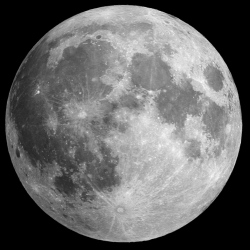
India will make its second mission to the moon in 2018, the Indian Space Research Organization announced this week. The Chandrayaan 2 spacecraft consists of an orbiter, lander and rover configuration “to perform mineralogical and elemental studies of the lunar surface,” the Indian Space Research Organisation said.
Chandrayaan 2, India’s second mission to the Moon, is an advanced version of the previous Chandrayaan-1 mission. It consists of an Orbiter, Lander and Rover configuration. It is planned to be launched as a composite stack into the Earth Parking Orbit (EPO) of 170 X 18,500 km by GSLV-Mk II. The Orbiter carries the combined stack up to moon till the Lunar Orbit Insertion (LOI). The combined stack is then inserted into a lunar orbit of 100 km x 100 km. The Lander is separated from the Orbiter in this orbit.
The Orbiter with scientific payloads will orbit around the moon. The Lander will soft land on the Moon at a specified site and deploy the Rover. The scientific payloads onboard the Orbiter, Lander and Rover are expected to perform mineralogical and elemental studies of the lunar surface.
The Lunar Lander development would be done by ISRO and Chandrayaan-2 will be totally an Indian mission.
Chandrayaan-2 will pay close attention to floating lunar dust, widely considered one of the biggest challenges in the face of human colonization. The lunar surface gets blasted with a lot of solar wind and ultraviolet radiation. It results in a layer of charged ions known as a plasma sheath in which dust particles are known to levitate. It’s an otherworldly headache, considering how dust can get into everything from spacesuits to rovers.
“The dust was so abrasive that it actually wore through three layers of Kevlar-like material on Jack’s boot,” Larry Taylor, director of the Planetary Geosciences Institute at the University of Tennessee, once said describing a 1972 moon walk by NASA astronaut Harrison Schmitt. For any long-term colonization, figuring out how floating lunar dust works is vital.
The ISRO will try to accomplish all this on a relatively cheap budget, spending 6 billion rupees, or about $93 million, which is around the price of a SpaceX Falcon Heavy rocket launch. Chandrayaan-2 will be one of the first ISRO projects without any Russian involvement even at launch, instead hurtling into space at Satish Dhawan Space Center, located on a barrier island in the Bay of Bengal.
Lunar missions are also being planned by China, Japan and other countries, among others. Like these, India’s explorations are partly driven by the need to improve understanding of the Moon’s environment in the event that governments or private entities decide to establish a human settlement there. One poorly understood phenomenon is floating lunar dust. Without an atmosphere like Earth’s, the surface of the Moon is buffeted by solar wind and ultraviolet radiation, creating a layer of charged ions called a plasma sheath in which dust particles can levitate.
If humans colonize the Moon, this dust will be a significant challenge, says planetary scientist Penny King of the Australian National University (ANU) in Canberra. It gets into everything, from astronauts’ suits to machinery and equipment, where it causes damage, she says. “Understanding how it moves around is pretty critical.” ISRO says the Chandrayaan-2 orbiter and lander will carry a first of its kind instrument, called the Radio Anatomy of Moon Bound Hypersensitive ionosphere and Atmosphere (RAMBHA), to measure the density of the near-surface plasma and how it changes over time.
The rest of the spacecraft’s suite of instruments will collect data to help scientists study other aspects of the Moon’s present environment and how it has evolved. Chandrayaan-2’s lander will take the first on-site thermal measurements on the lunar surface near a polar region. The mission “is expected to further consolidate the findings from the first mission and add new ones with in situ analysis of the lunar surface and ionosphere,” says Annadurai, who is also director of ISRO’s Satellite Centre in Bangalore.
